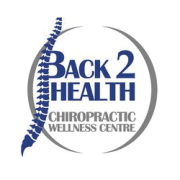Back Pain & Spine Care – Article by Sarah Worthington
Back Pain & Spine Care – Article by Sarah Worthington
The causes can be wide-ranging and complex. The good news is that in most cases it isn’t a serious problem, and it might just be caused by a simple strain to a muscle or ligament.

Firstly, we need to understand what is causing the pain and how to improve it. But, perhaps more importantly, we need to understand how to prevent pain and recurrence.
Back pain can affect any part of your spine; the most common occurs in your low back – your Lumbar spine. Pain in your upper back – your Thoracic spine (and frequently across your shoulders) is often related to bad posture. Neck pain – Cervical Spine pain commonly results in headaches.
The spine is made up of 24 individual bones (Vertebrae) separated by a jelly-like Intervertebral disc. At the base of the spine several vertebrae are fused into the Sacrum which is connected to the pelvis.
The spine protects the spinal cord, which is part of the Central Nervous System. It is like segmented armour that can bend and move naturally with the body. Under the armour a lot is happening. Messages travel from around the body up and down the spinal cord and into the brain. The brain processes these messages and sends replies back down the spinal cord to the body.
We cannot easily control against injury, disease, and age. But we are able to prevent spine disorders that result from misuse or lack of use. When we understand these factors, we can recognize how to prevent most spinal issues.
Lack of Use refers to reduced activity, particularly of the spine, resulting in weak muscles unable to support normal function and reduced flexibility, which can cause an increased likelihood of sprains and strains during normal activity. The answer? Stay active! Adults should be aiming for at least 150 minutes of physical activity a week. So, take up a sport, play physical games, get a dog that needs regular walks, or go out dancing!
Misuse comes in various forms. Prolonged postures, such as sitting or standing for too long, are common causes of pain. More frequently, we as humans are sitting behind a desk for many hours of the day.
This is unnatural for our spine and will ultimately lead to back issues in most people. Get up and move! It is recommended that we move from a seated position every twenty minutes to prevent dysfunction and disease.
Poor posture whilst sitting, standing, sleeping, driving, lifting, using a phone, tablet, or computer can all lead to and exacerbate dysfunction in the spine.
We must learn to use the correct postures for these activities. We will discuss more on this in a later article.
Overuse or overloading. Repetition of the same activity can cause strain on the joints and muscles, in much the same way that your favourite song or movie would get annoying if it was all you ever listened to or watched. Avoid repetitive behaviours and activities. Overloading refers to putting stress on your joints and spine.
Through lifting or carrying something heavy, you need to learn how to perform chores and activities without putting undue stress on your system.
This denotes multiple factors including psychological, environmental, and chemical. Here are some examples of unhealthy activities that can negatively impact our spinal health; Eating poorly, becoming dehydrated, lack of sleep, smoking.